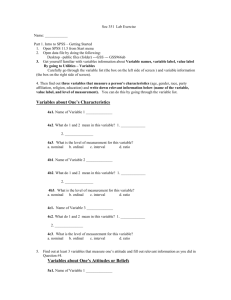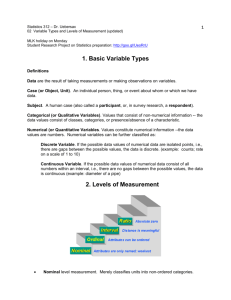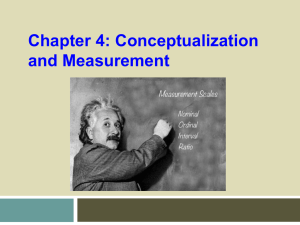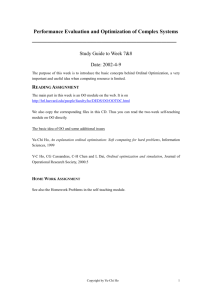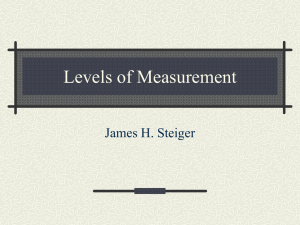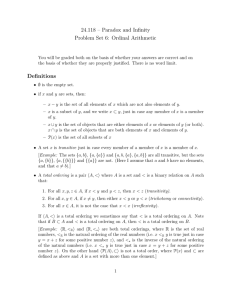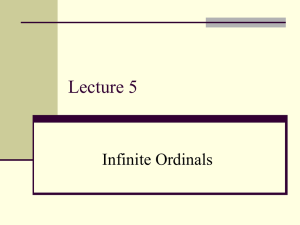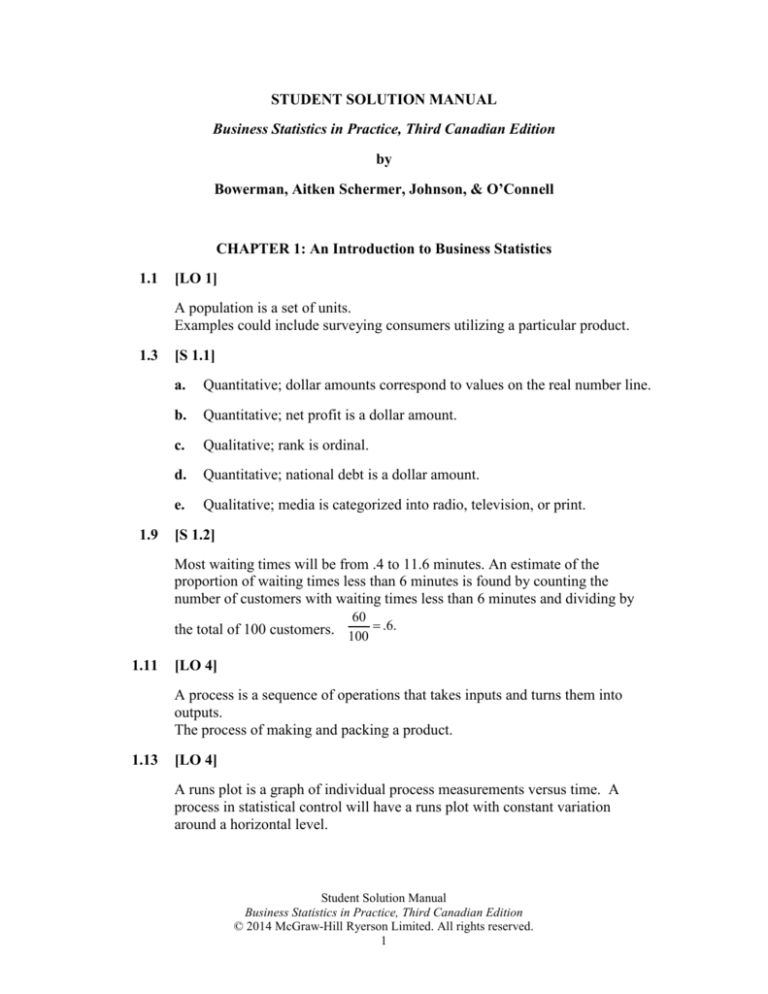
STUDENT SOLUTION MANUAL
Business Statistics in Practice, Third Canadian Edition
by
Bowerman, Aitken Schermer, Johnson, & O’Connell
CHAPTER 1: An Introduction to Business Statistics
1.1
[LO 1]
A population is a set of units.
Examples could include surveying consumers utilizing a particular product.
1.3
1.9
[S 1.1]
a.
Quantitative; dollar amounts correspond to values on the real number line.
b.
Quantitative; net profit is a dollar amount.
c.
Qualitative; rank is ordinal.
d.
Quantitative; national debt is a dollar amount.
e.
Qualitative; media is categorized into radio, television, or print.
[S 1.2]
Most waiting times will be from .4 to 11.6 minutes. An estimate of the
proportion of waiting times less than 6 minutes is found by counting the
number of customers with waiting times less than 6 minutes and dividing by
60
the total of 100 customers. 100 = .6.
1.11
[LO 4]
A process is a sequence of operations that takes inputs and turns them into
outputs.
The process of making and packing a product.
1.13
[LO 4]
A runs plot is a graph of individual process measurements versus time. A
process in statistical control will have a runs plot with constant variation
around a horizontal level.
Student Solution Manual
Business Statistics in Practice, Third Canadian Edition
© 2014 McGraw-Hill Ryerson Limited. All rights reserved.
1
1.15
1.17
1.21
[LO 4]
a.
The process does not seem to be in control because the variation is not
constant at a horizontal level.
b.
Claims numbered 47–56 correspond to March 2010. The plot shows a
sharp increase revealing instability. The ice storm had a significant impact
on the time needed to process claims. Improvement is needed.
[LO 4]
a.
Yes, in control. There is constant variation at a horizontal level.
b.
Most breaking strengths will be between 21.3kg and 24.5kg.
[LO 5]
Ordinal, nominative, ordinal, nominative, ordinal, and nominative.
1.23
[LO 6]
Define construct, generate item pool, pilot test items
1.25
[LO 6]
a.
rich source of information but costly in terms of time
b.
test large numbers of people but lower response rate
c. test large numbers of people but negative reactions from people, require
shorter questionnaires, etc.
1.31
[S 1.6]
Divide 1853 by 100 and round down to 18. Select a random number between 1
and 18. This is the first unit sampled. Take every 18th unit by successively
counting down 18 from the 1st chosen unit.
1.35
[LO 5]
Nominal, ordinal, ordinal, ordinal, nominal, nominal.
1.37
[LO 4]
Not in statistical control (variation is not constant at a horizontal level).
Student Solution Manual
Business Statistics in Practice, Third Canadian Edition
© 2014 McGraw-Hill Ryerson Limited. All rights reserved.
2




